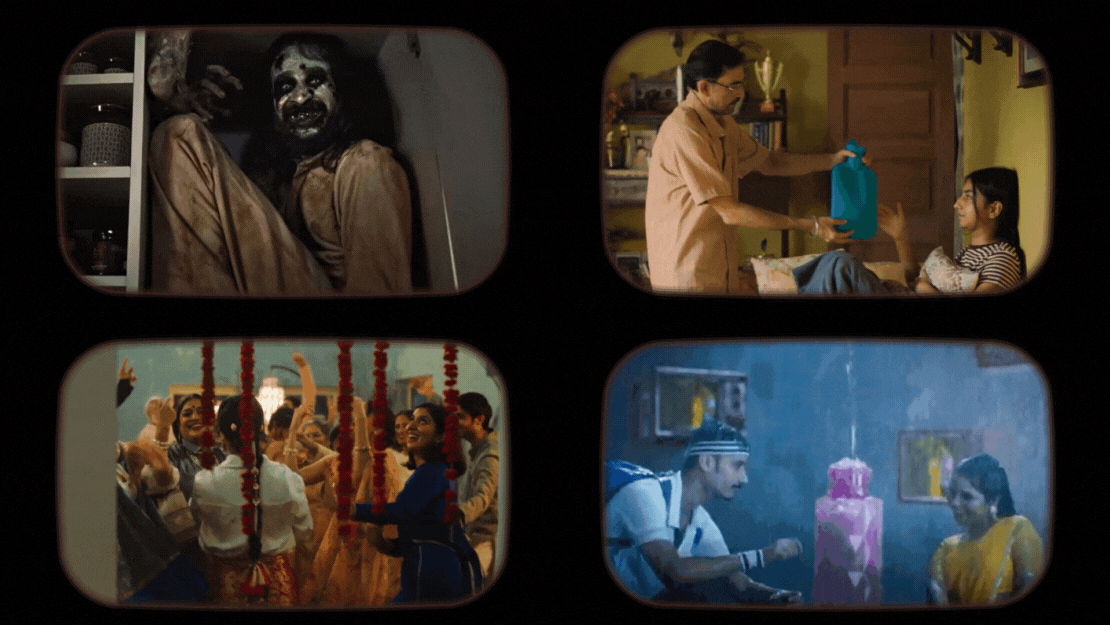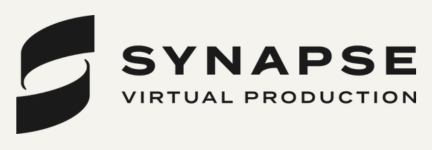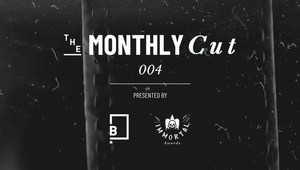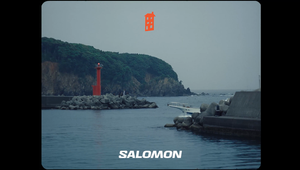
Masala Marketing: How Bollywood is Spicing Up Indian Advertising

Releasing more than 2000 films a year on average, India has long been the global leader in film production. From Bollywood to Tollywood, Kollywood, Mollywood and more, Indian cinema spans over 20 languages and multiple cultures. And now, those movies are drawing in global audiences, pulling in millions from the US box office, from Oscar-winning extravaganza ‘RRR’ to the likes of ‘Pathaan’ and ‘Kalki 2898 AD’.
Inevitably Indian film’s potent cultural influence seeps into the advertising and marketing world – and some recent cinematic trends are really shaping audience expectations, raising the ambition across marketing teams and creative departments.
“India’s film industry has gone from Bollywood to ‘Bolly-world’,” says Krishna Iyer, director of marketing at MullenLowe Lintas Group. “Thanks to platforms like Netflix, Amazon Prime, and even Korean drama fans stumbling into Malayalam thrillers by mistake, Indian content now has serious street credentials.”
“OTT platforms have dismantled the long-standing dominance of theatres and TV, enabling hybrid revenue models that merge theatrical, streaming, satellite, and branded integrations – expanding profitability and reach,” agrees Rashi Bhushan, associate vice president of digital planning and buying at DDB Mudra.
“For years, Indian cinema was boxed into clichés – song-and-dance routines, over-the-top melodrama, or regional tropes. Now, with films such as ‘RRR’, and ‘The Lunchbox’ earning BAFTAs and Oscars, as well as opening doors to co-production, international licensing, and cross-border storytelling, India’s content is becoming a global cultural export. This shift has fueled a major disruption in content creation and raised the creative bar – not just in storytelling craft, but in cinematic scale and emotional depth.”
Krishna notes how global brands are tapping into “India’s flair for emotional drama, spectacular visuals, and vibrant musical flourishes.” From Dior incorporating tabla rhythms at Mumbai shows to Netflix promos with Bollywood’s emotional crescendo, “that signature Indian storytelling (why whisper when you can croon from the rooftops?) is becoming shorthand for dramatic, shareable, emotionally potent content.”
The skill for seamlessly blending genres that evoke a myriad of moods is one of Indian film’s most defining features. This “art for emotional layering” as Rashi puts it, “is one of the most powerful lessons Indian cinemas teaches – and something more brands should embrace.”
Indian films rarely tell stories in a straight line. “Instead, they weave together multiple emotions – joy, pain, humour, hope, conflict – often within a single scene,” he says. “This emotional multiplicity is what makes Indian cinema so immersive and relatable. It doesn’t shy away from drama or sentimentality – it leans into it, knowing that emotion is the bridge to memory.”
Krishna shares that genre-blending “reflects the way we live and consume content in India – no single-tone experiences, just full-spectrum narratives. We don’t compartmentalise joy, grief, romance, or wit – they all exist in the same breath. This multiplicity connects deeply with Indian audiences.”
“This mirrors the Indian consumer’s thirst for value or ‘Paisa Vasooli’ (being ‘worth the money’),” explains PG Aditiya, co-founder and CCO at Talented. “We want more things in the same thing.” And now, says Abhishek Deori, planner at Toaster INSEA, Indian audiences “expect tonal shifts, genre collisions, and layered emotions in everything they watch, including ads.”
Abhishek points to recent campaigns such as Livspace’s ‘Horrific Cabinet Meeting’ and Urban Company’s ‘Filter Toh Pagal Hai’ to demonstrate. “Livspace opens like a ghost story but flips into interior design comedy, using horror tropes to land a home improvement insight, while Urban Company sets up a melodramatic romance between a maid and a technician, only to undercut it with absurd humour and a satirical plug for a water purifier. Each one borrows from cinema’s genre playbook while keeping the brand message sharp and surprising.”
“This approach is not just a stylistic choice – it's a cultural one,” Rashi says. “Indian audiences are deeply accustomed to storytelling that blends contrasts. Ads that weave together humour, drama, action, and sentiment feel familiar, engaging, and real. They entertain while building emotional equity. At DDB, we call this the ‘emotional advantage’ – the belief that brands grow stronger when they connect with people on a deeper level, not just a rational one.”
He cites Stayfree’s ‘It’s Just a Period’ as an example of this in action. “Instead of using shock, shame, or overt education, the campaign takes a cinematic, emotionally nuanced approach. The film shows young boys sensitively navigating the topic of menstruation – awkward, curious, and eventually, supportive. It’s not preachy, it’s human. And that’s what makes it powerful.
“Just like great Indian cinema, the campaign taps into quiet, everyday moments to spark empathy and dialogue. It doesn’t shout its message – it lets the story do the work. As one might say, an ad today isn’t just a pitch – it’s a short film with a soul. It is no longer about selling a product in isolation. It’s about telling a story – and the best stories blend genres, just like life itself.”
Blurring the Lines Between Commercial and Cinema Talent
Perhaps one of the reasons Indian advertising mirrors its film industry so closely is that a lot of the makers work across both fields. “There’s a HUGE overlap of talent,” PG affirms. “Advertising writers aspire to write films. Advertising directors aspire to direct films. Even Academy Award winner AR Rahman started off by composing jingles for ads. So film choices naturally make their way into ads. This can be seen in our ‘short film ads’ – impactful two-three minute stories whose objective is to go viral or get brand love.”
Krishna says, “the lines blur all the time because storytelling is the constant, whether it’s 60 seconds or 180 minutes. Directors like Gauri Shinde started in advertising and then gave us ‘English Vinglish’, a film full of quiet strength. Mira Nair [‘Monsoon Wedding’, ‘Queen of Katwe’] was brought in for a Tanishq film to sell jewellery celebrating modern women as ‘queens’ of their everyday lives. It works both ways – cinema draws from advertising’s brevity, while ads borrow cinema’s emotional weight. Because when the story matters, the format becomes secondary.
“When the idea demands emotional nuance and cultural sensitivity, we look for directors who can bring that cinematic gravitas – even if it’s a story to be told under a minute. In the end, whether it’s a 60-second commercial or a three-hour film, the brief is the same: move people.”
Rashi highlights how today’s audiences are quick to skip anything that screams ‘sell’, “but when a brand crafts a film-like narrative with compelling characters, drama, music, and a strong emotional hook, it breaks through the clutter. It becomes entertainment, not interruption.”
He offers Kusha Kapila’s pre-launch content for her brand, UnderNeat, as a standout example. “Instead of using typical influencer promos, she developed a scripted, slice-of-life series that explored identity, self-worth, and body positivity – all the themes that deeply resonate with her audience and align with her brand’s purpose.
“What worked wasn’t the product – it was the story. Viewers shared it not because it was marketing, but because it felt personal and authentic. This is the power of narrative-first branded content: when done well, it earns time, trust, and conversation. It proves that the best branded stories don’t shout, they connect – and in doing so, they sell without ever needing to. Cinematic content doesn’t ask to be watched – it invites. And audiences happily press play.”
Arcs, Not Ads
Despite the craft crossover between Indian film and advertising, Abhishek thinks brands are neglecting one major thing: “What Indian cinema has always understood, and what many brands seem to overlook, is that some stories need time. They need time to unfold, to pause, to build emotional gravity through silence, stillness, or a glance that lingers just a second too long. Indian storytelling often allows characters to falter, to wander, to find their meaning slowly.”
He believes patience with narrative structure is not about indulgence but rather trusting the story to deepen. “Trusting that emotion, when given space, does not fade but sharpens. In contrast, much of brand storytelling today is built around efficiency. The 30-second ad. The snappy explainer. The line that must land in five words or fewer. These formats have their place, but they often leave no room for emotional complexity.
“This does not mean every brand needs a three-hour campaign film. It means brands need to think in arcs, not just in ads. They need to create characters that evolve, stories that revisit moments, and emotions that carry forward. Whether through episodic content, recurring narratives, or layered brand worlds, the goal should not be to sell in an instant, but to build something that people want to return to. And ultimately, that is how stories move from being consumed to being remembered.”
One of the prominent features of Indian films in cinema is the inclusion of an interval, due to the long running times. “The interval sequence is written into the film,” PG says, “usually timed around the film’s biggest cliffhanger moment. This leads to a 10 minute break where ads play on the big theater screen while the audiences grab more popcorn and use the toilets.
“The interval is where our two industries meet. Several brands even customise commercials depending on which film they’ll be playing in between. OTT, for all its effectiveness, has killed the interval – and with it, the place that advertising has had within the film watching experience.”
PG notes that because of the interval, Indian audiences are used to describing most films in two halves (eg ‘first-half was great, but the second half was a let-down’) which is a lesson he likes to translate into advertising: “Let your product window (the closure and second half) be as good as the set-up.”
Krishna agrees. “Too many brand films go, ‘Here’s an emotional moment. Buy product.’ But when you build the emotion, build the world, and then bring in the brand – it doesn’t just sell, it sticks. That’s how you go from an ad to a moment. And moments get remembered.”
On where Indian storytelling is heading next, Rashi says, “We’re entering a new era where advertising borrows more and more of the depth and texture of cinema – think emotionally rich short films, episodic brand narratives, and storytelling that allows space for nuance. The most compelling campaigns will no longer feel like ads; they'll feel like stories worth watching.
“As Indian cinema continues to push creative boundaries, branded content will follow. In that sense, Indian filmmaking is not just influencing ads – it’s reshaping how brands connect with hearts, not just eyeballs.”
“Expect branded webisodes, character spin-offs, and ads where the story survives long after the product shot,” Krishna concludes. “Imagine a universe where the mother from the biscuit ad now has her own podcast. Or a teenage girl from a cooking oil campaign gets a three-part mini-series rustling up her own recipes. The cinematic universe of brands isn’t far.”















